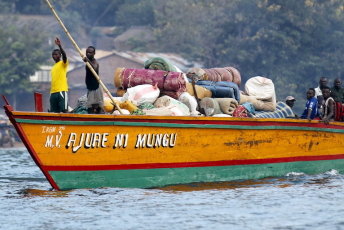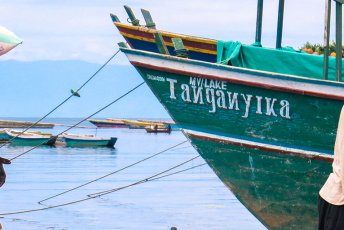Haliotis midae – abalone or perlemoen – is a large sea snail found along South Africa’s coast, particularly in the Western and Eastern Cape. It is the commodity binding poverty-stricken communities in South Africa to high-end restaurants in Asia, where it is often consumed at celebratory events. The channels that funnel it from the seabed to dining tables feature regularly in the media, highlighting a complicated criminal economy. Over the past month, a Bloemfontein court sentenced two traffickers to a fine of R20 000 or two years behind bars; another two suspects were arrested in Wellington for being in possession of 1 000 kilograms of abalone, worth some R7m; and nine suspects were arrested in Jeffreys Bay, with an abalone haul worth R240 000.
The foundation of the illicit abalone economy is in its biology: it is slow to reproduce, so harvesting risks endangering its population. While the danger of overharvesting abalone was recognised as early as the 1960s, the current crisis traces part of its origins to measures implemented in the 1990s that were meant to promote inclusion and environmental sustainability in the fishing industry.
Since the 1960s, harvesting has been controlled via permits issued within an overall total allowable catch (TAC), which was set somewhere below 1 000 tonnes annually between the 1970s and early 1990s.
With South Africa’s political transition, policy shifted to expand participation among black fishing operators and artisanal fishermen, with permits reoriented accordingly. The 1998 Marine Living Resources Act stressed the need for environmental sustainability in harvesting.
But this system was poorly administered, and the TAC was steadily reduced (500 tonnes in 1999). This spurred resentment as fishermen felt shut out of the activities they had historically pursued. To make ends meet, many turned to poaching.
This coincided with the expansion of South Africa’s access to foreign markets, a rising demand for abalone and a weakening rand. The potential payoffs for abalone harvesting – lawful or otherwise – were powerful. A 2018 TRAFFIC report indicated that from 2000 –2016, of the 55 863 tonnes exported from South Africa, 39 958 tonnes (valued at US$891 million) were regarded as illegally harvested.
Two groups of organised criminals emerged – one being Chinese syndicates with a preexisting presence in South Africa. ‘All contraband runs in the same pipelines,’ notes environmental investigative journalist John Grobler, whose work shows links between the abalone, illegal ivory and rhino horn trade.
The second group are South African gangs, who use abalone to complement other criminal activities. They’ve created a sense of order and predictability in the trade – including providing protection (that the state has not) to coastal communities, albeit with coercion. They engage desperate local people in harvesting and transporting perlemoen hauls, and funnel large quantities to buyers, which independent harvesters cannot do.
As Kimon de Greef noted in a 2013 study of Hangberg, a criminal economy involving both individual poachers and organised crime grew in poor coastal communities, supporting livelihoods but eroding social cohesion. Research confirms the damage to communities that the trade and its ‘gangsterisation’ have inflicted.
Several studies note that Chinese syndicates and domestic gangs have developed a destructive symbiosis: while local gangs deliver abalone, their Chinese counterparts often pay in narcotics, fuelling drug addiction in communities.
From harvesting, abalone moves to curing centres. It may be dried, reducing its weight and characteristic smell, for easier transport. Some is exported directly from South Africa. Some is smuggled to South Africa’s neighbours that don’t have significant abalone resources (such as Namibia, Zimbabwe, Mozambique, and even Zambia and the Democratic Republic of the Congo). It’s trucked among consignments of vegetables or flown in small planes over borders, then re-exported, overwhelmingly to Hong Kong.
‘It’s big money,’ says Good Governance Africa wildlife crime expert Ross Harvey. ‘Estimates suggest anywhere [between] US$16 and US$23 billion a year, [so] it makes sense for syndicates to develop a supply chain, trafficking routes and end markets.’
Government attempts to control the trade initially centred on quotas. In 2007, abalone was listed under the Convention on International Trade in Endangered Species (CITES). These measures proved ineffective, were criticised by communities and couldn’t be enforced. Many customs officials in South Africa and abroad also lacked understanding of the CITES requirements, and the imperative of combatting the trade. A subsequent outright ban on commercial harvesting was rescinded in 2010, along with the listing of abalone from CITES.
For police, abalone poaching is not always prioritised. While some successful arrests and prosecutions have been achieved, law enforcement agencies lack the resources to deal decisive blows.
Corrupt state fisheries officials redirect confiscated abalone to syndicates for kickbacks. In the 2021 case of Solomon Sauls, ‘tens of thousands of rands’ were paid to a group of nine officials.
‘There are challenges [that] involve corruption in the department which are contributing to the illegal abalone trade and yes, officials were convicted for corruption from as early as 2001 to as recent as 2024 in this regard. This is a significant factor contributing to the indiscriminate harvesting of the abalone resource,’ the Department of Forestry, Fisheries and the Environment said in an email.
Meanwhile, prosecuted cases hardly affect the syndicates. Grobler says there is reluctance to prosecute these cases, due to well-established corruption and links between politicians and gangs.
Combatting the illegal abalone trade is also hindered by the need to coordinate responses in different jurisdictions. In neighbouring countries, customs officers lack cause to intervene in outgoing shipments with more than a tax penalty.
More pertinently, in destinations such as Hong Kong, there are limited grounds to act against imports at all. ‘As long as it has been declared at import and the appropriate taxes paid, there is nothing unlawful about the import and subsequent trade in abalone,’ says GI-TOC.
There is awareness of poaching in Hong Kong – but demand for South African abalone makes this moot. Besides, the Hong Kong market is reportedly controlled by a small number of traders, some with links to syndicates – and it is difficult for legitimate traders to avoid interaction with the criminal economy.
Tackling the problem would require three things. Firstly, better enforcement, along with capacity and coordination. Grobler suggests that dedicated policing units, with specialised training and sufficient resources (equipment and expertise), and dedicated environmental courts may boost enforcement.
Secondly, international coordination. Regional harmonisation of laws prohibiting perlemoen poaching and trading requires cooperation among customs agencies. The Southern African Development Community’s Implementation Strategy on Transnational and Serious Crimes would be a useful starting point to drive this harmonisation.
Similarly, a re-listing on CITES would be useful, but only if accompanied by significant improvement in South African customs’ ability to enforce it. This would require limiting demand. ‘Ban the consumption of abalone in consumer markets and communicate extensively on why it’s being done,’ Harvey says.
This raises the third issue: securing public buy-in. Whether among Hangberg’s poor or Hong Kong’s affluent, there are incentives to tolerate, if not participate in, the illegal abalone trade. Unless this can be turned around – alternative opportunities for livelihoods and concern for the species’ survival – it’s hard to see the trafficking system halting.
Terence Corrigan, ENACT Consultant and Project and Pubs Manager, South African Institute of Race Relations
Image: REUTERS/Nathan Frandino







